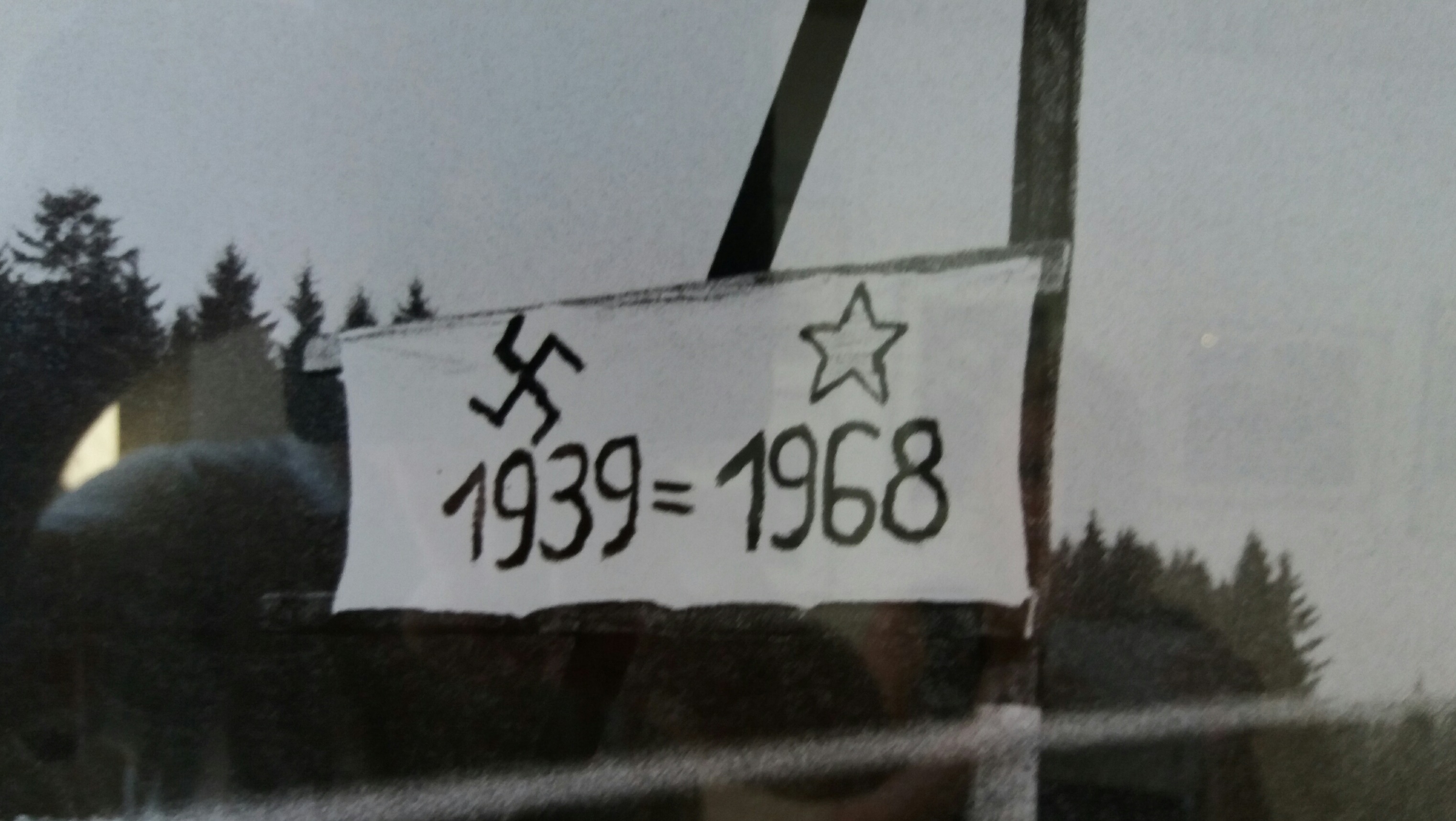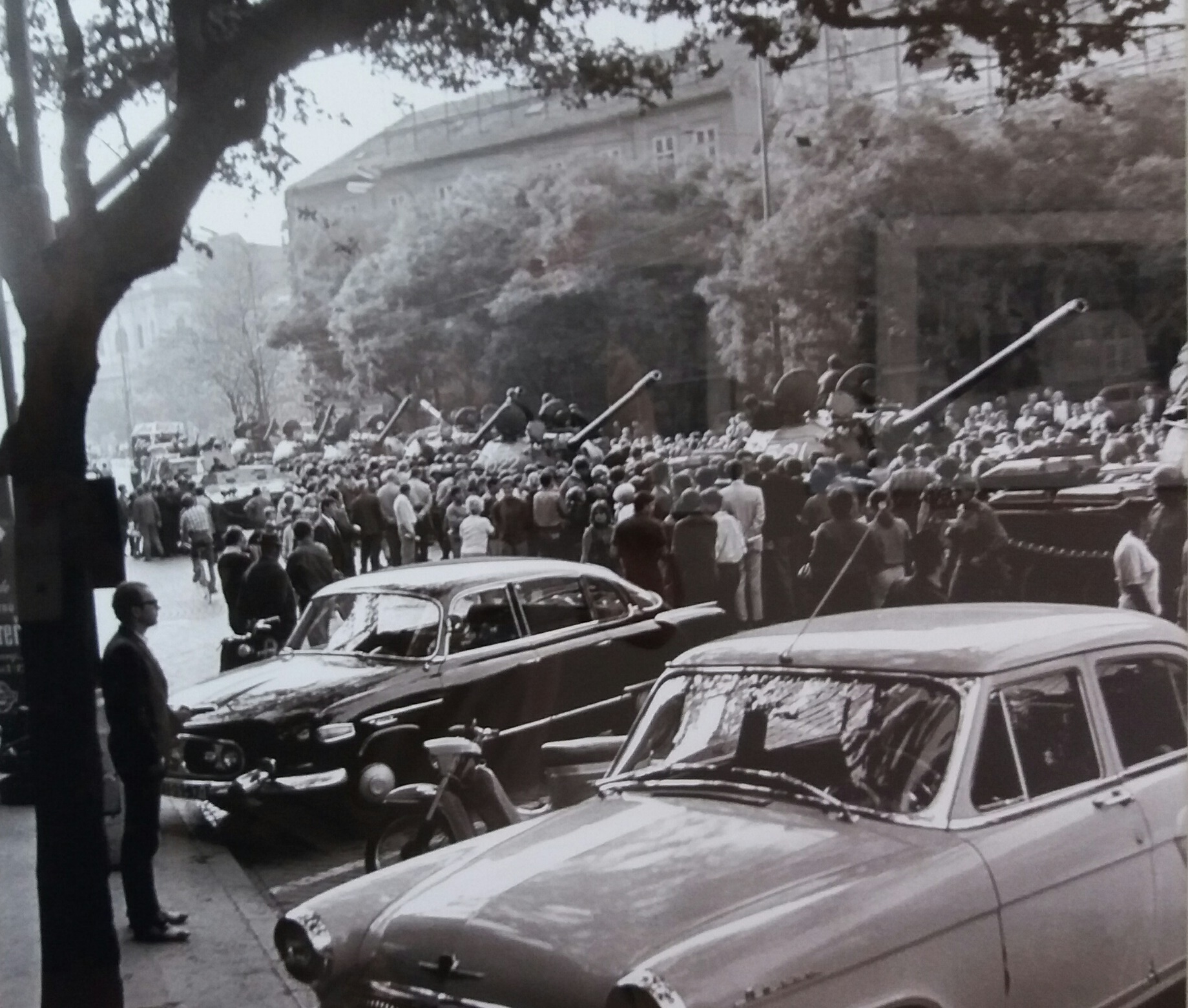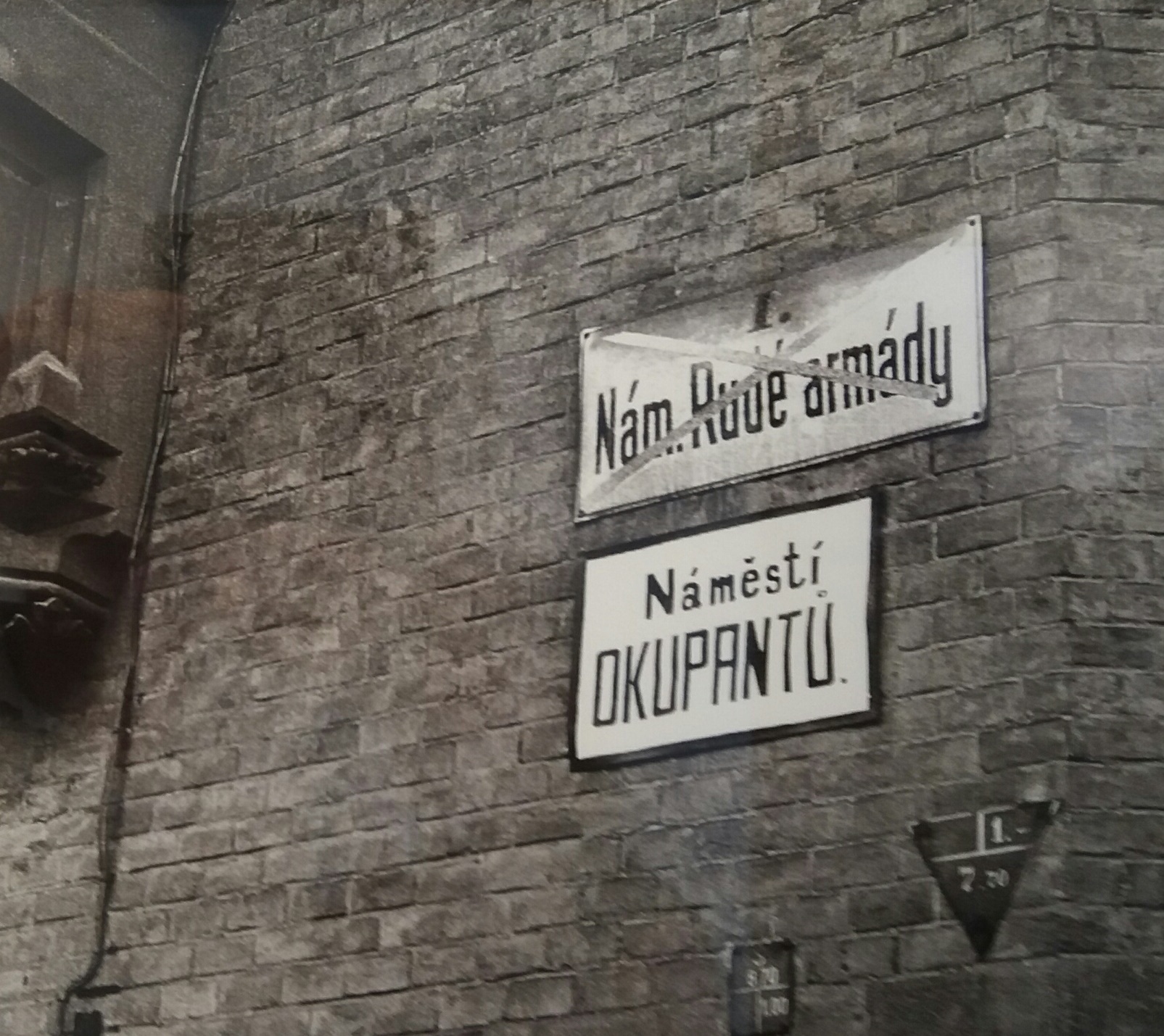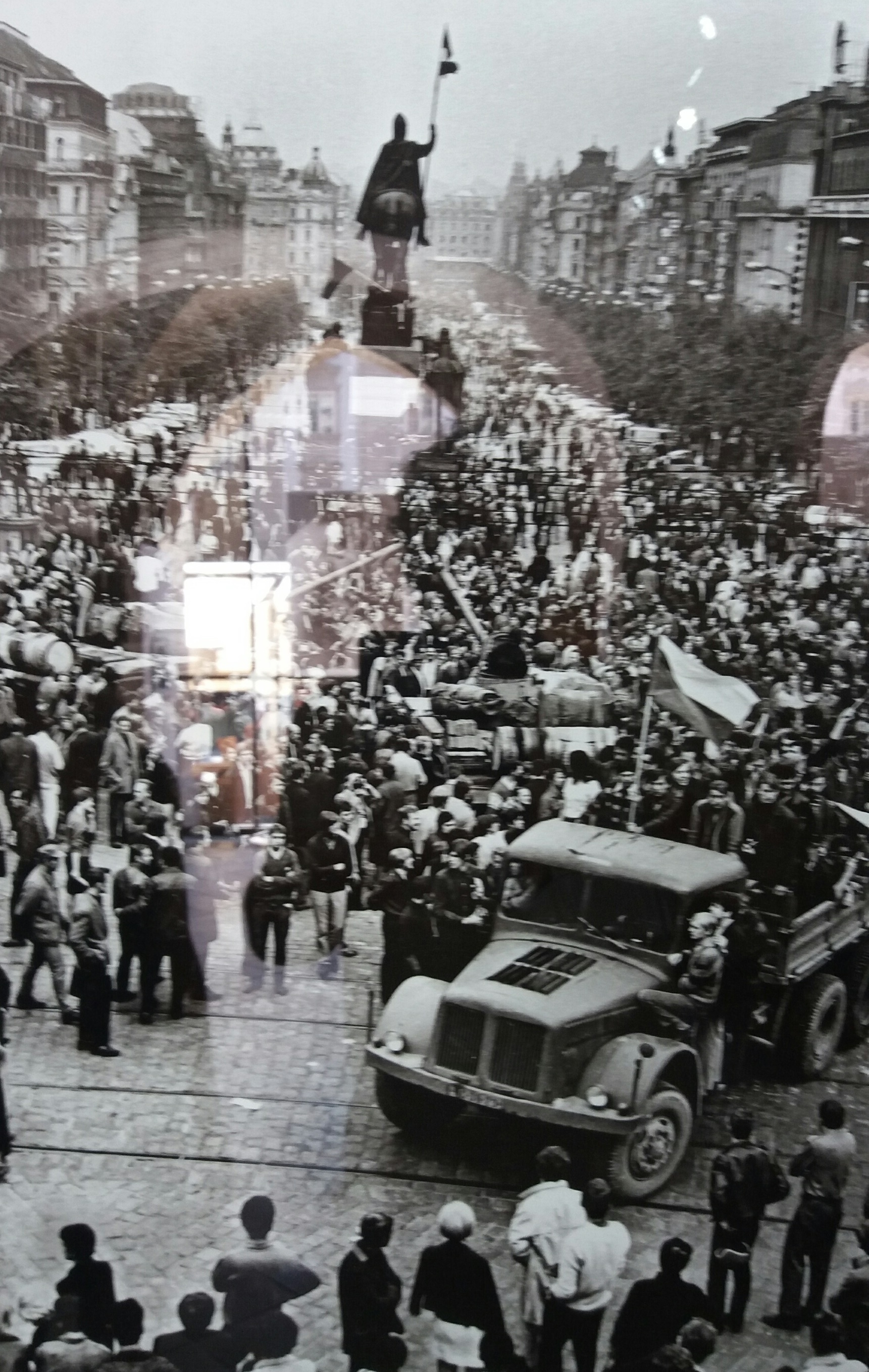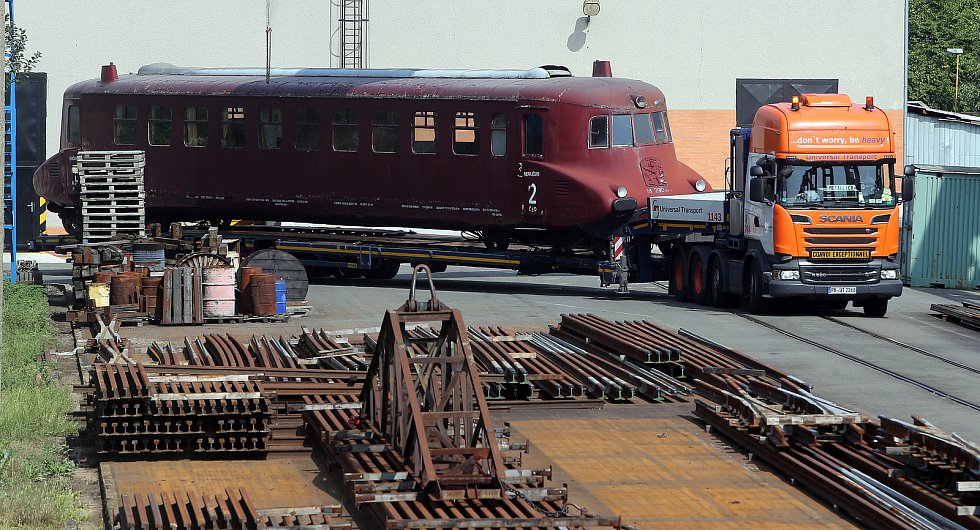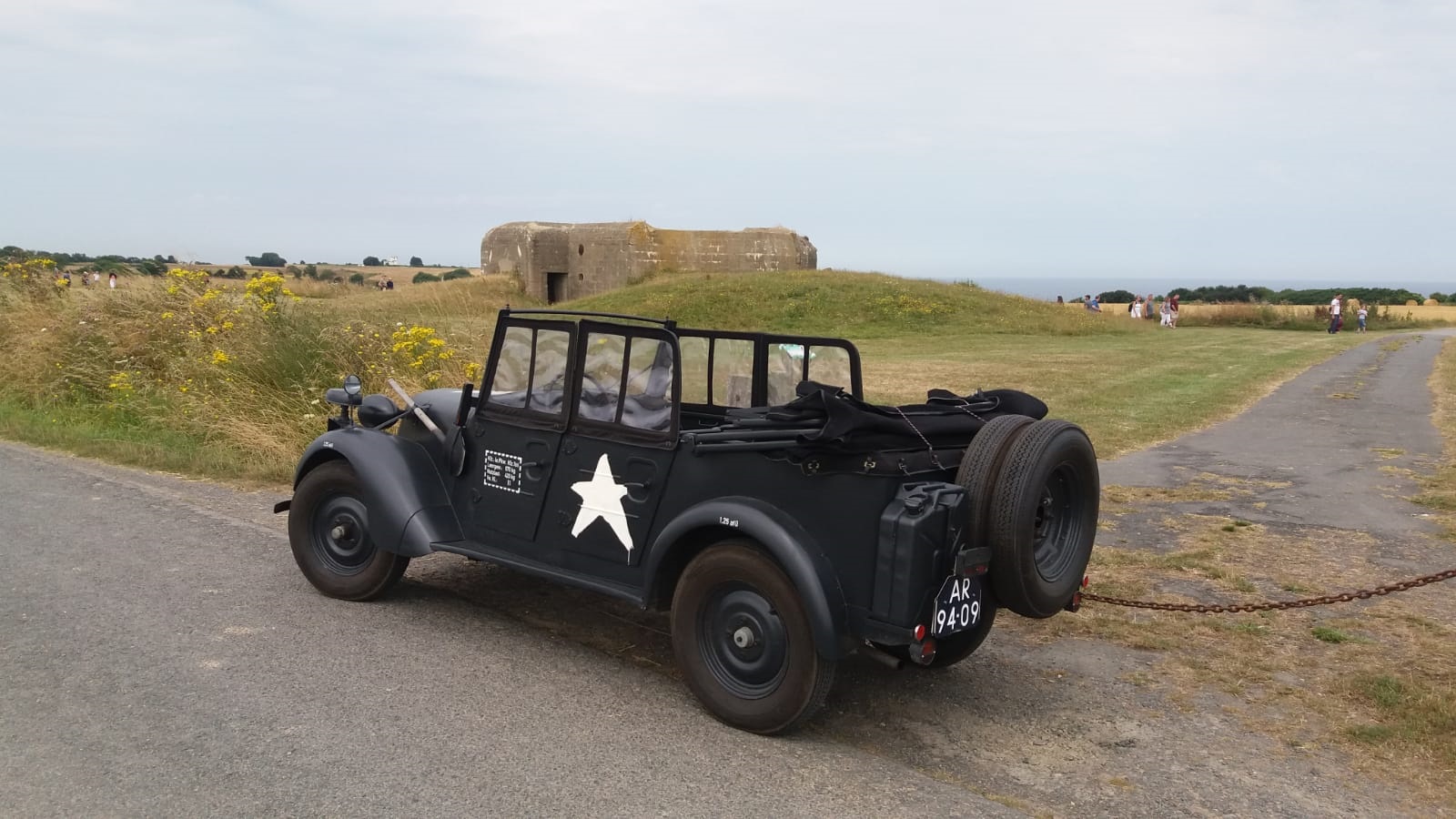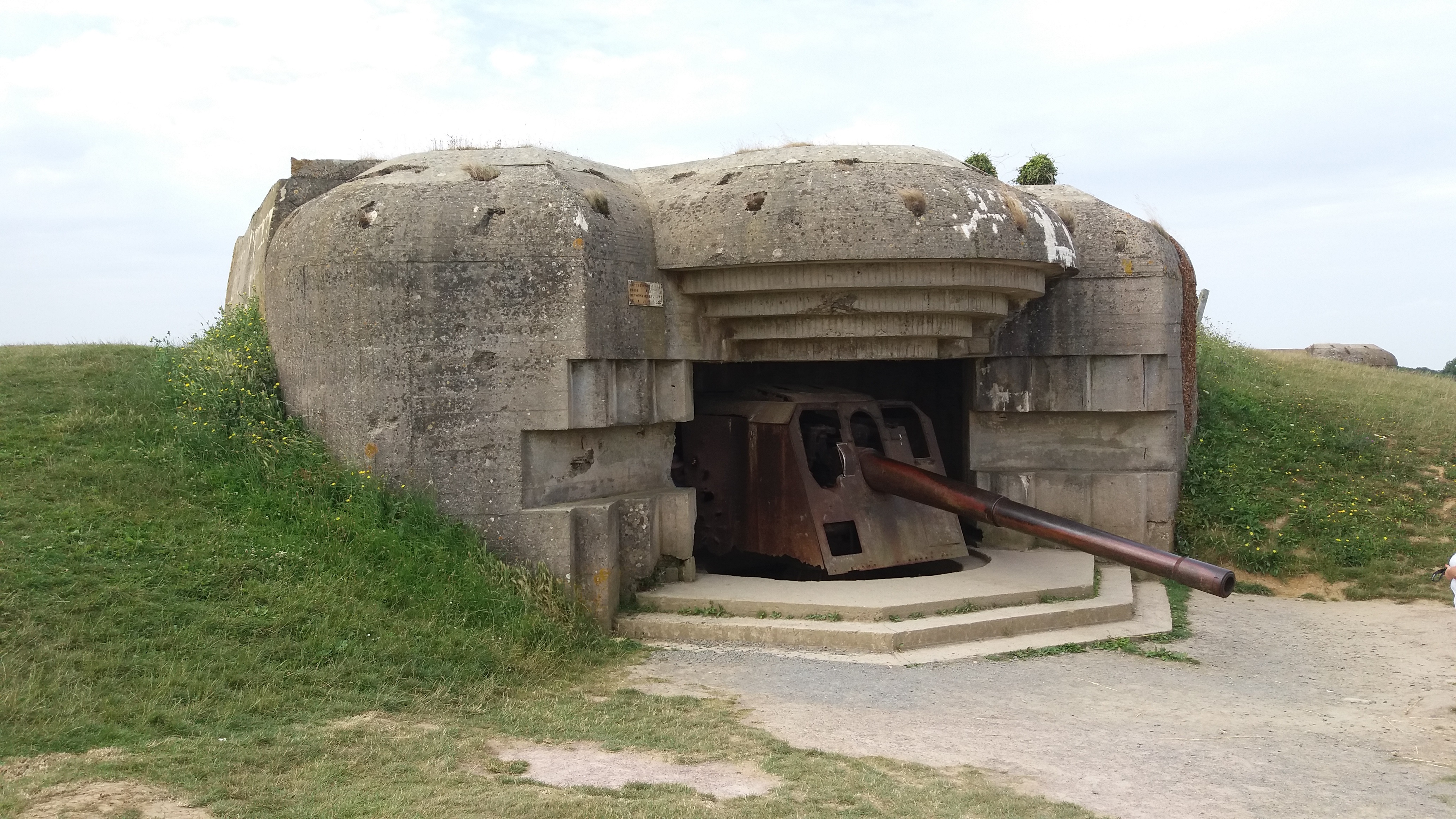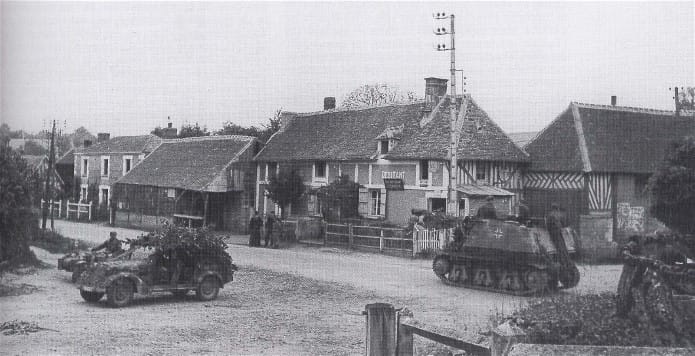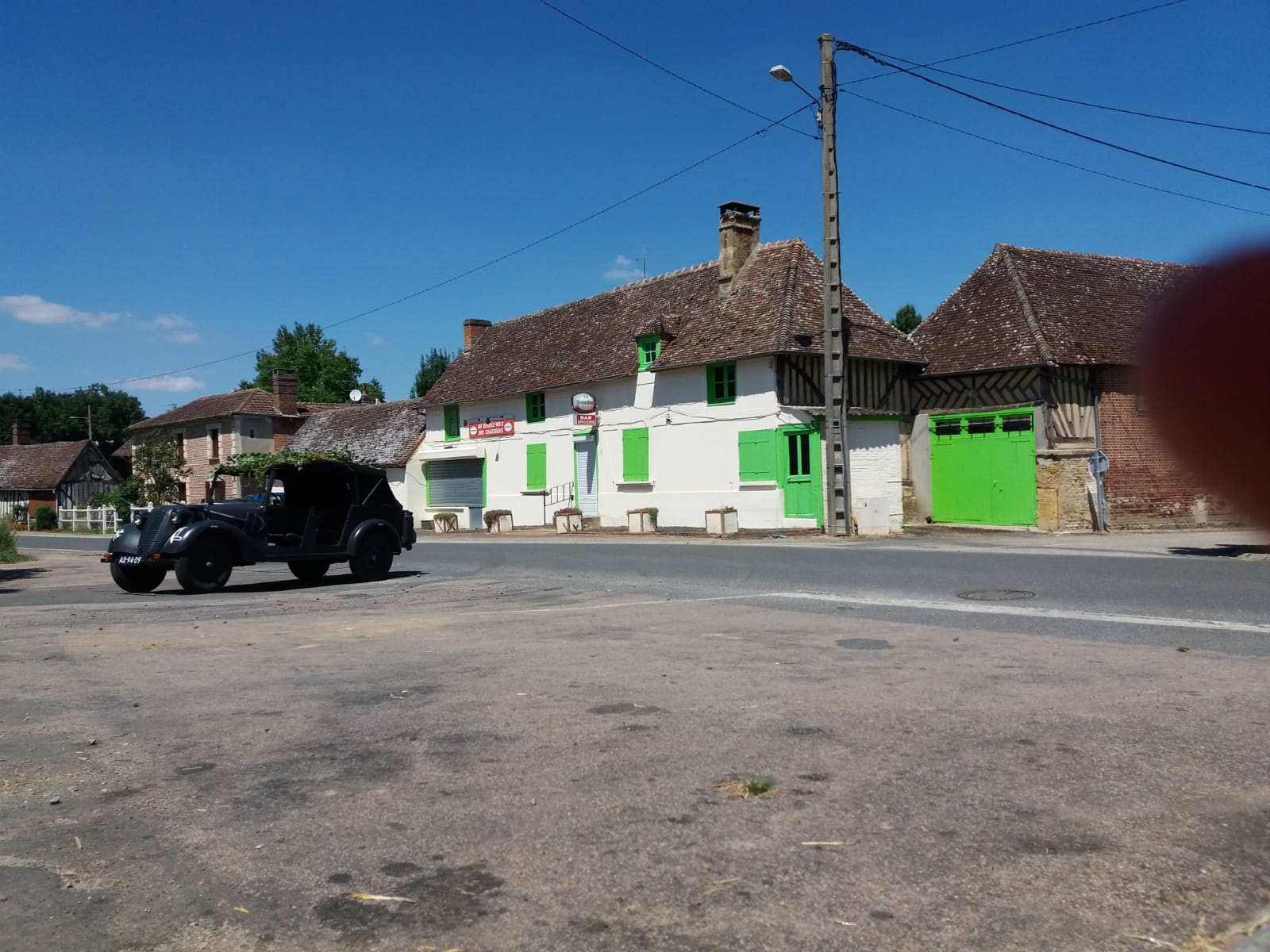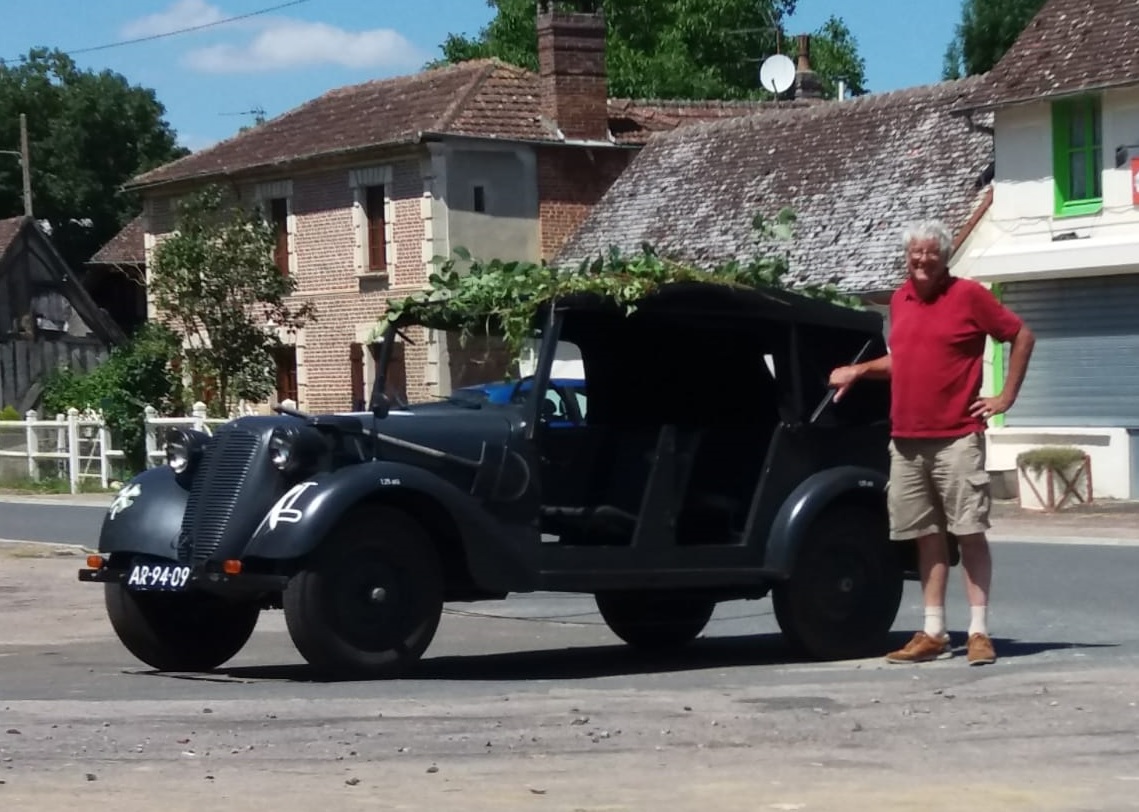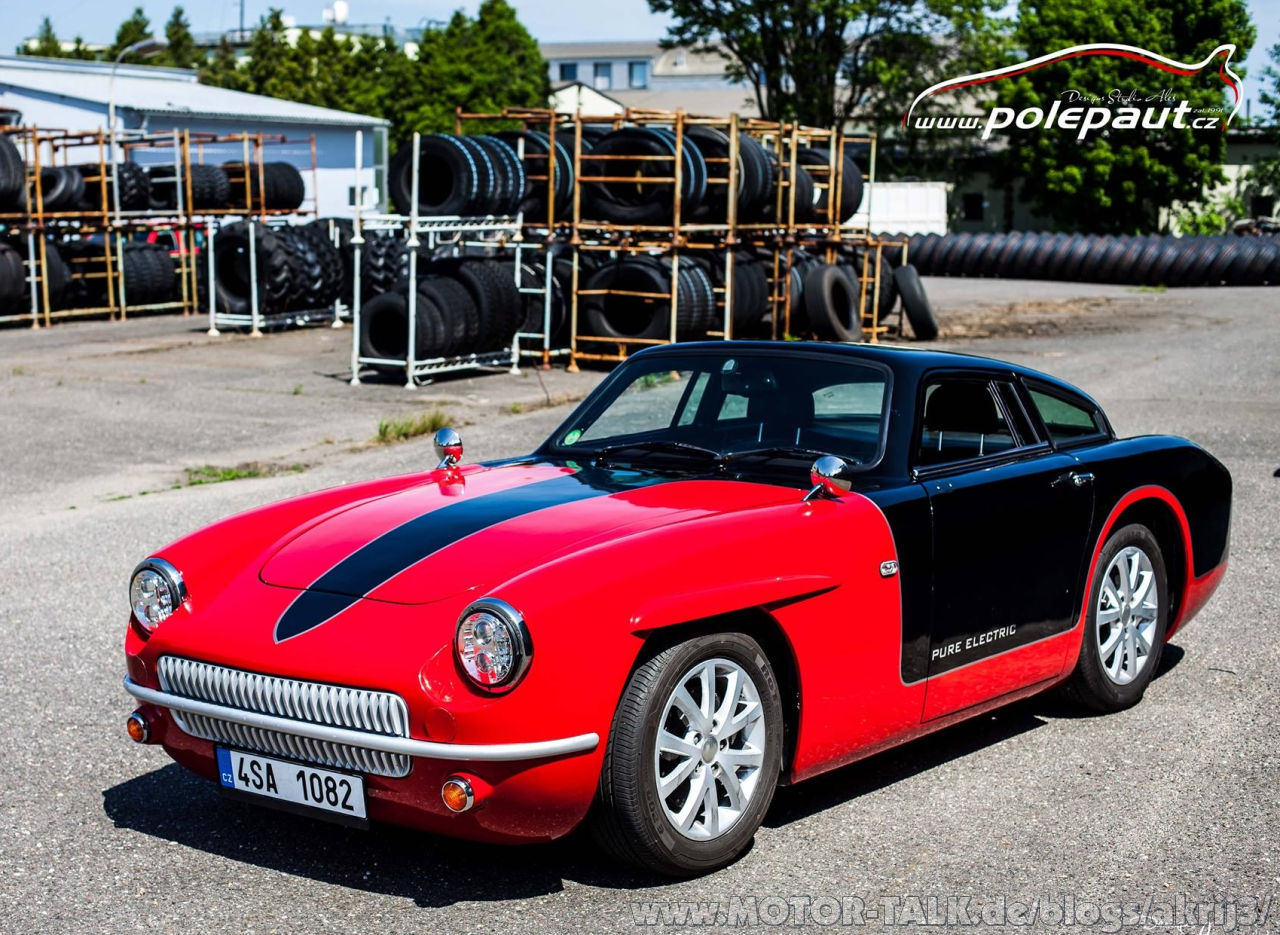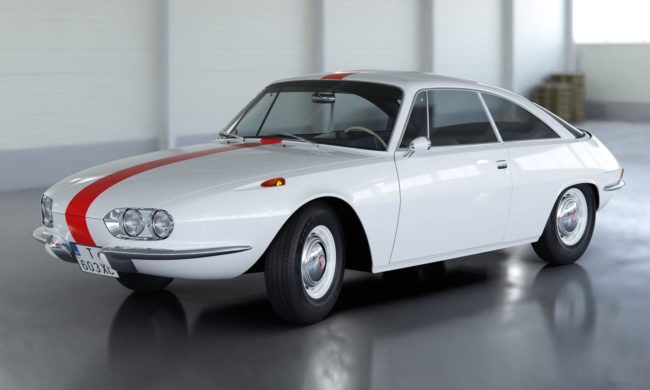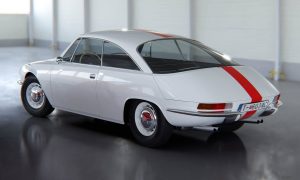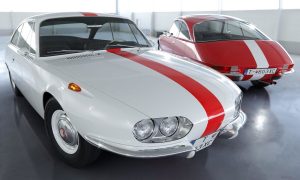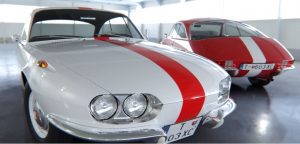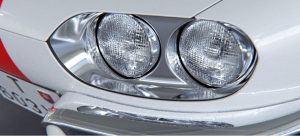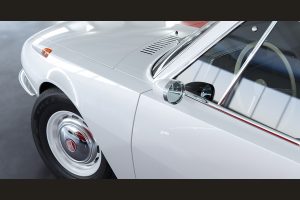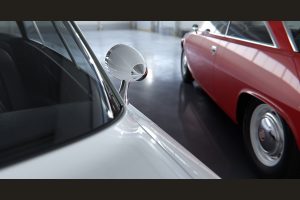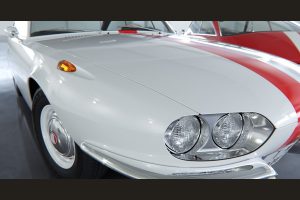Your editor just couldn’t resist being in Prague on August 21, 2018. Fifty years after. There were several l exhibitions about the Warsaw Pact counties invasion, though I felt the authorities were ambivalent about the commemoration, as the communist became part of the government in July 2018, the first time since 1989, the public using the commemoration not only to disapprove upon what happened in 1968, but also the present prime-minister.
50 years ago: Prague August 21, 1968
30 min. video: The Slovenska Strela under restauration. English subtitles.
Tatra & Beetle in Hindu Times
T 57K at the Normandy liberation beaches
At Longues sur Mer
In July 2018, I had the pleasure to visit the Normandy beaches where the liberation of Europe started on D-day 1944. With the T57K, we visited quite some sites. There are several museums in the area about the Atlantic wall, D-day, its logistics, the liberation of Normany etc etc. It is a recommended visit.
More info about the area:
https://en.wikipedia.org/wiki/Longues-sur-Mer_battery
http://en.normandie-tourisme.fr/sites-and-attractions/the-d-day-landing-beaches-5-2.html
T57K visits Normandy
Just months before D-Day: T57K in Martin de Fresnay spring 1944
and in July 2018.
I*n the summer of 2018 your editor visited France with the T 57K. Somehow, in the war days, the German occupiers in France used a lot of T 57k’s. One T 57K was spotted in St Martin de Fresnay, in Normandy. After D-Day, the T 57 Ks, mostly used for police and supporting duties by the Germans, suddenly had to fulfil front duties.
As I realised that the scenery in St Martin de Fresnay had hardly changed, it became a challenge to photograph the T57K at the same spot, in 2018, 74 years later! Already present in Normandy after the 2018 TRUK rally, we managed to find the spot and tried to manoeuvre the T57K on exactly the same sport. The result is seen on the photos.
Being in Normandy, it was nice to visit the D-Day beaches and all rememberance sites.
Many German vehicles including the T 57Ks were destroyed by the Allies in the weeks after D-Day, especially in the so-called Falaise-gap.
Some served as booty vehicles for the British and Americans though.
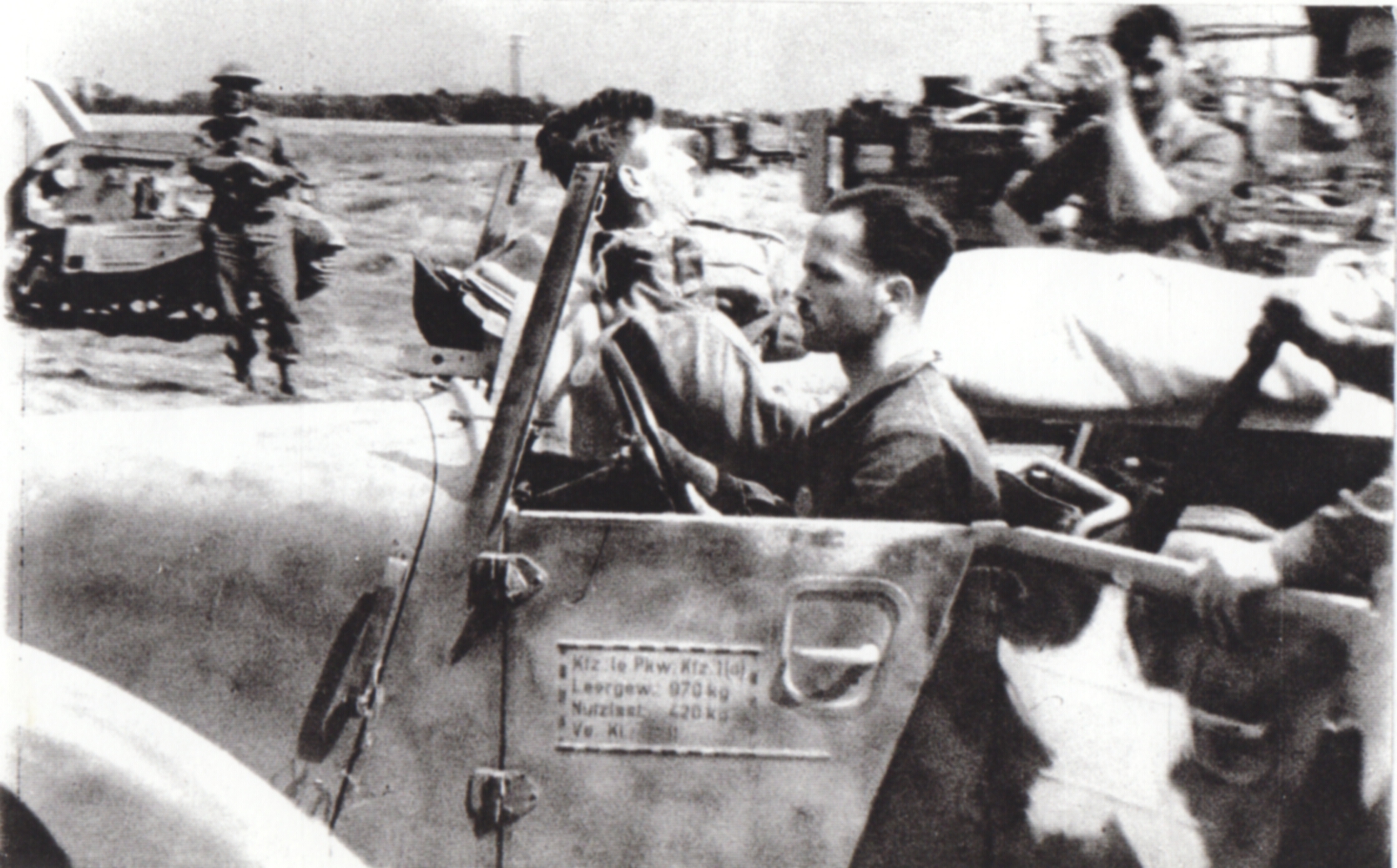 Booty T57K used as an ambulance by the British forces. 1944, South East of Caen.
Booty T57K used as an ambulance by the British forces. 1944, South East of Caen.
T 603 article
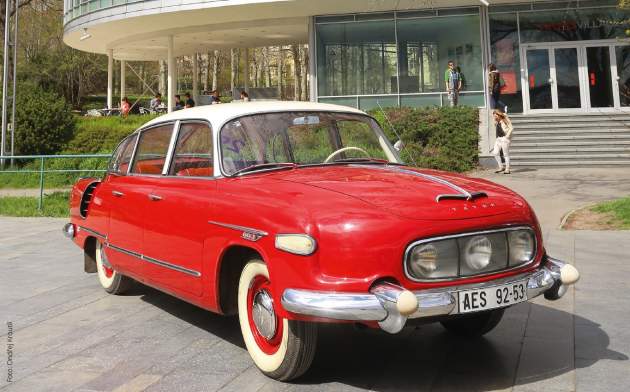 https://translate.google.nl/translate?sl=cs&tl=en&js=y&prev=_t&hl=nl&ie=UTF-8&u=https%3A%2F%2Fwww.autoviny.sk%2Freportaze%2F118320%2Ftatra-603-bruselka-trojoka-demonstracia-moci-doplatila-na-nove-zakony&edit-text=
https://translate.google.nl/translate?sl=cs&tl=en&js=y&prev=_t&hl=nl&ie=UTF-8&u=https%3A%2F%2Fwww.autoviny.sk%2Freportaze%2F118320%2Ftatra-603-bruselka-trojoka-demonstracia-moci-doplatila-na-nove-zakony&edit-text=
T77a Nonsense by Jalopnik
About a month ago, I went on vacation in Prague and paid a visit to the very lovely National Technical Museum. It’s awesome and definitely worth a visit. Because if you do go, you’ll see a sleek, silver 1937 Tatra 77a parked on the ground floor, which I later learned was actually shockingly good at killing Nazis during World War II. Here’s why.
In 1934, Czech vehicle manufacturer Tatra—a company led by legendary engineer Hans Ledwinka—launched the first serially produced, aerodynamically designed car called the T77. It was streamlined and sleek, with a body shaped in a wind tunnel and a freaking fin on its back, like some glossy fish car from the future. It was partly designed by Paul Jaray, the engineer behind the aerodynamics of the Zeppelin.
The Ten Greatest Engine Designers In Automotive History
Geniuses like Nikolaus Otto and Rudolf Diesel came up with the bases of internal combustion and…
Since the T77 needed to be as aerodynamic as possible, Tatra minimized the T77’s front face area and stuck the engine—a 2.97-liter air-cooled V8, good for 59 horsepower—in the back, right above the rear axle. This allowed the car to reach speeds of 90 mph, which were considered extremely fast in those pre-war days.
In 1935, the T77 was improved to create its successor, the 77a. The displacement of the V8 was increased to 3.4 liters and power jumped to 70 HP, with a top speed of 93 mph. The cars were among the most advanced and high-tech of their time.
Underneath their flashy hides, the T77 and 77a both had four-wheel independent suspension that used swing axles in the back and a transverse leaf spring system in the front, writes Hemmings.
Stunning as they were to look at, though, the T77 and the 77a were harrowing to drive. Thanks to an extreme rear weight bias and long wheelbase, the T77 and 77a were said to have acutely twitchy handling. It would be altogether too simple to overcook a corner and have the heavy ass swing out into dangerous oversteer. Tire technology from the 1930s probably didn’t do it any favors, either.
The German occupation of Czechoslovakia lasted from 1938 to 1945. The stylish and fast Tatras were very appealing to the Nazis and rose in popularity with high-ranking SS officers, British writer Steve Cole told the Telegraph. And you can totally see why: When you bully your way into a country, you want to take the nicest shit for yourself. Textbook invaders, the lot of them.
Trouble rose when those Nazi officers tried to go fast in their new cars, though. A bunch of them kept crashing and dying.
Per Cole:
“These high-ranking Nazi officers drove this car fast but unfortunately the handling was rubbish, so at a sharp turn they would lose control, spin out and wrap themselves round a tree killing the driver more often than not. The Allies referred to the Tatra cars as their secret weapon against the Nazis.
“More high-ranking Nazi officers were killed in car crashes in the Tatra 77 [and 87] than were killed in active combat. It goes to show that being too flashy doesn’t get you anywhere and will leave you dead.”
Savage, but probably not something the Czechoslovakians were too broken up about.
Eventually, though, Tatra was able to improve the handling of the 77a’s successor, the T87. Its engineers shortened the wheelbase by 12 inches and cast its engine from a lightweight alloy, according to Hemmings. The resulting car was nearly 900 pounds lighter than the outgoing model.
The National Technical Museum’s placard beside the 77a doesn’t mention any of its Nazi-killing prowess, but now you know and you can impress your friends and relatives the next time you pay it a visit.
Why Vaclav Havel did not use a Tatra T613 but a BMW
JK 2500’s evolution into Luka EV
Video + article: Slovak Museum of Design on its way to create a 1:1 T 603X Coupe
The Slovak Museum of Design (SMD) has recently completed a visualization of the Tatra 603 X Coupé project, which will be a model for real-world modelling. Even for that time, an attractive car from the city on the Danube obviously gets its second chance.
The modernized successor of the popular “sixth-wheel” from the Socialist era of the former Czechoslovakia was originally produced in Bratislava, but it did not get it into a functional prototype. Tatra Kopřivnice canceled the project.
The history of the first Slovak coupé, which had the potential of serial production thanks to its “quadriver sister”, was composed by SMD enthusiasts from drawings, technical drawings, models and snippets of memories of the direct participants of the dreamed project, which began with the proposal of John Cine in 1963.
Variant Coupé has never seen the light of the world and remained just as an unfulfilled dream. SMD motorists and design enthusiasts believe that this is the last chance for the Tatra people in Bratislava to meet and, together with them, this more than half a year’s car dream has gone into reality.
“We have just completed the computer visualization of the Tatry 603 X Coupé and therefore also data for model milling. The basis was the technical drawings of the Coupé, photographs and the gypsum model of the limousine at 1:10. We sent pictures to Jan Cin’s corrections to Canada. If everything goes well, at the end of May, the author himself will modify the 1: 4 model in the modelar plasticine so that we can then make perfect shapes at a 1: 1 scale, “says the official SMD website.
Even for that time, an attractive car from the city on the Danube obviously gets its second chance.
The modernized successor of the popular “sixth-wheel” from the Socialist era of the former Czechoslovakia was originally produced in Bratislava, but it did not get it into a functional prototype. Tatra Kopřivnice canceled the project.
The history of the first Slovak coupé, which had the potential of serial production thanks to its “quadriver sister”, was composed by SMD enthusiasts from drawings, technical drawings, models and snippets of memories of the direct participants of the dreamed project, which began with the proposal of John Cine in 1963.
Variant Coupé has never seen the light of the world and remained just as an unfulfilled dream. SMD motorists and design enthusiasts believe that this is the last chance for the Tatra people in Bratislava to meet and, together with them, this more than half a year’s car dream has gone into reality.
“We have just completed the computer visualization of the Tatry 603 X Coupé and therefore also data for model milling. The basis was the technical drawings of the Coupé, photographs and the gypsum model of the limousine at 1:10. We sent pictures to Jan Cin’s corrections to Canada. If everything goes well, at the end of May, the author himself will modify the 1: 4 model in the modelar plasticine so that we can then make perfect shapes at a 1: 1 scale, “says the official SMD website.
